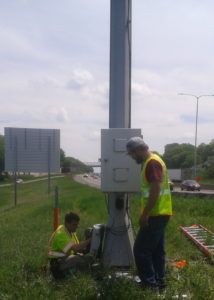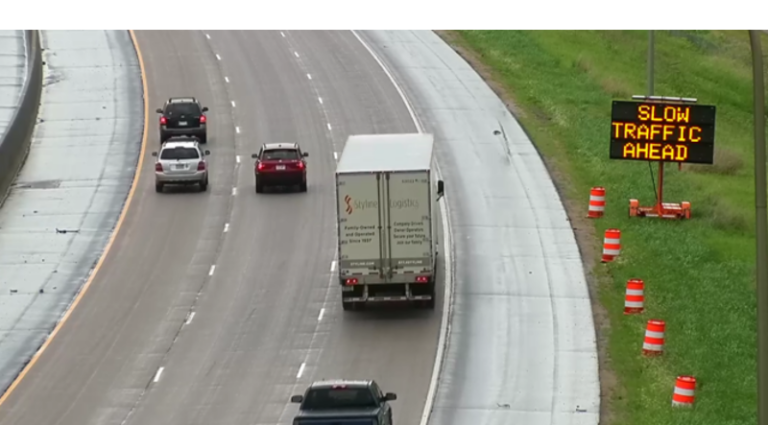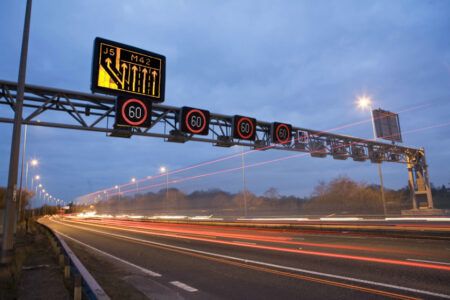The Minnesota Department of Transportation (MnDOT), working with the University of Minnesota (UMN) have developed and evaluated a new speed warning system that alerts drivers nearing freeway work zones.
Drivers traveling at highway speed may come upon unexpected congestion, resulting in sudden braking and the risk of rear-end collisions. Unfortunately, posting advisory speed limit messages near these freeway work zones has not been effective. To combat this problem, MnDOT has developed a Smart Work Zone Speed Notification (SWZSN) system that informs drivers of the actual speed of slowed downstream traffic near large freeway work zones. Researchers from the UMN’s Minnesota Traffic Observatory (MTO) have tested and evaluated the system over time in an actual highway construction work zone and found that it works.
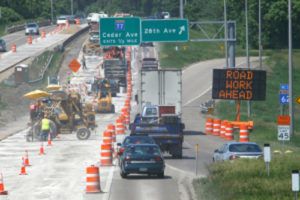
Speed detection sensors were installed on poles every half mile through a new highway construction work zone. Using a type of portable Intelligent Lane Control System (ILCS), the new system collects traffic speed data throughout a work zone, runs it through an algorithm, and generates a real-time message for drivers on a variable message sign (VMS), such as ‘35mph 1 Mile Ahead’ or ‘Stopped Traffic Ahead’. The system was deployed at a large, multistage highway work zone on I-94 east of downtown Saint Paul during work replacing and repairing the roadway. New pole-mounted speed detectors were installed throughout the work zone, along with solar-powered cameras on mobile trailers.
The MnDOT-funded project was completed in three phases during two construction seasons. During the first year of implementation, researchers found glitches in the speed notification algorithm. By the second construction season, they had made adjustments and reconfigured the speed sensors, significantly reducing those anomalies. According to the team, the most significant results of this project showed that in situations where the messages communicated to drivers were consistent and accurate, deceleration rates in work zones declined more than 30%. The most important observation, stemming from both positive and negative influences, was that the speed notification system was noticed by drivers and resulted in a statistically significant influence on driving behavior, unlike other driver alert systems.
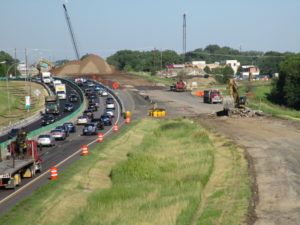 “Through the analysis of tens of thousands of data points collected from highway drivers, we were able to show that messages clearly informing drivers about slowed traffic ahead, unlike speed advisories, influence them to reduce their speed in a timely way in congested highway construction areas,” said John Hourdos, director of the UMN’s MTO. “The cameras were important for capturing traffic flow images in strategic locations where traffic queues were forming because the work zone was complex, crowded, and often changing.”
“Through the analysis of tens of thousands of data points collected from highway drivers, we were able to show that messages clearly informing drivers about slowed traffic ahead, unlike speed advisories, influence them to reduce their speed in a timely way in congested highway construction areas,” said John Hourdos, director of the UMN’s MTO. “The cameras were important for capturing traffic flow images in strategic locations where traffic queues were forming because the work zone was complex, crowded, and often changing.”
Hourdos continued, “Processing the video with custom-developed machine vision applications, we were able to extract vehicle trajectories and calculate each vehicle’s deceleration rate when approaching traffic congestion. The speed notification system was clearly noticed by drivers, and it has a statistically significant influence on their behavior. They slowed down sooner, and more smoothly.”
Brian Kary, director of traffic operations at MnDOT’s Regional Transportation Management Center, said, “This project allowed us to troubleshoot and improve our messaging to drivers about downstream traffic slowdowns. We’ve already deployed the system at two current sites, with more planned for the future.”